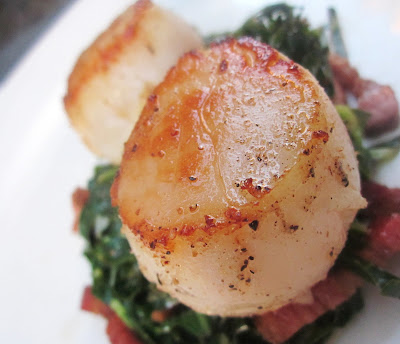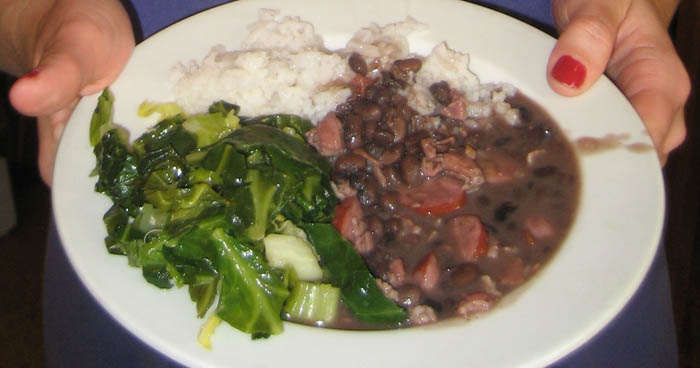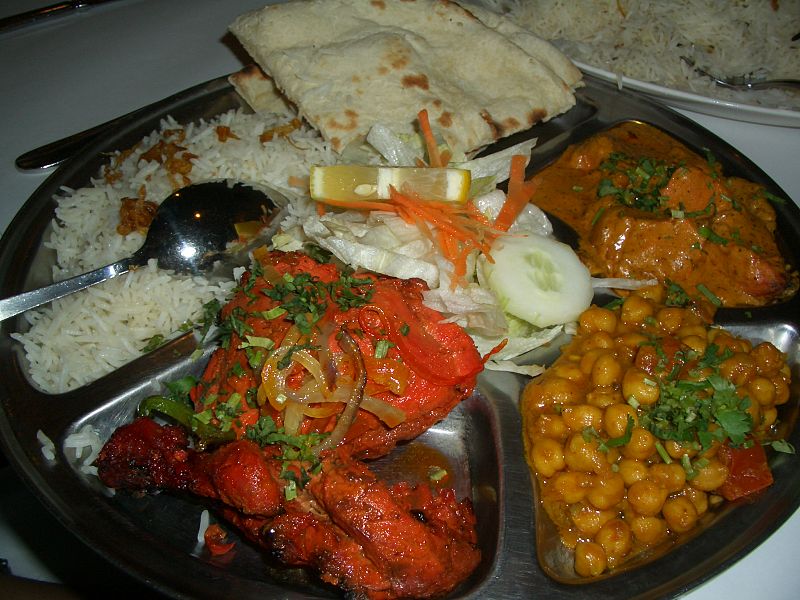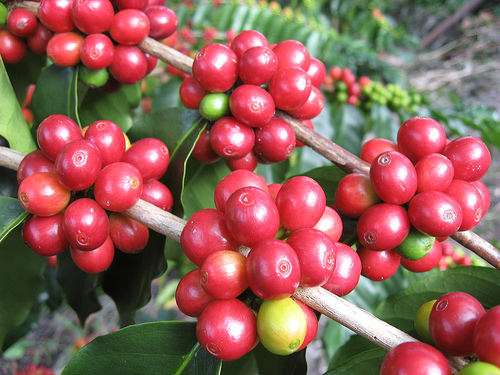



Article Source: http://EzineArticles.com/?expert=Beatriz_Alvarez
Indonesian Foods, Chinese Foods, Brazilian Foods, American Foods, Jamaican Foods




Article Source: http://EzineArticles.com/?expert=Beatriz_Alvarez


Traditional dishes in Jamaica are the representation of their history and culture. Through the dynamic and innovative minds of Jamaican people, they learn to adopt and mimic ideas from other foreign culture. Hence, Jamaican tend to combine food elements and techniques which make their food interesting and exciting to eat.
Having a strong influence of people that colonized Jamaica, their food preference has become extraordinary to taste with. Jamaican spices have been the most sought out seasonings that modifies the cuisine into more outstanding taste and style. These spices and seasonings are usually added in breakfast, lunch, and dinner food. Common spices used in Jamaican cuisine are the following:
These spices are grown in Jamaica, and they provide a distinct flavor to every Jamaican dishes. On the other hand, aside from having a unique blend of Jamaican spices, Jamaican foods have a special define dishes that can only be found in the island. Jamaica served spectacular meals with different styles and tastes. The typical traditional dishes and desserts in Jamaica becomes their trademark of having such an incomparable taste among all the islands in Caribbean.


Traditional Desserts are:
Above examples, only shows that the foods and spices in Jamaica are fresh and healthy to eat with. Even other countries and Caribbean islands were enticed with the uniqueness that the island could offer. People have always been tempted by the delicious and nutritious Jamaican dishes. Most people travel in Jamaica not only for the breathtaking beaches, and festivals they also visit the island because of food. It has been known that the Jamaican culture is very endearing and promising to others which give them lots of acknowledgment. Jamaican people have excelled in terms of festival, music, people, art, tradition, and most especially in terms of food and with this it is an achievement that everyone should be proud of.



Coffee is the most popular beverage worldwide with over 400 billion cups consumed each year. Coffee Arabica traces its roots to Abyssinia and was introduced into Arabia more than one thousand years ago. The tradition of coffee consumption is certainly one of the most established ones with ties to many cultures as merchants and people kept promoting coffee as a beverage of choice across the world.
In India, tradition gives credit to BaBa Budan, a Moslem pilgrim to Mecca, with the introduction of coffee into Southern India about 1600. The region where Baba Budan settled is still known as the Baba Budan Hills and continues to be an important coffee producing area in this part of the world. In 1699 coffee was introduced into Java. The coffee plants went from Java to Amsterdam in 1706 and a few years later they ended up as seedlings in the Paris Botanical Gardens. This explains how, in 1723, three of these plants went from Paris to Martinique. The French naval officer, Gabriel Mathieu de Clieu, was the person transporting the seedlings. Only one of the plants survived and from it Arabica coffee was established in Martinique. From Martinique, coffee went to Jamaica and to other coffee producing areas of the Western Hemisphere.
Coffee remains a popular and sought after beverage worldwide with many people devoted to finding new flavors, trying out new ways of cooking with coffee, painting with coffee, using coffee as additive for natural pesticides, natural soil conditioners and fertilizers, as ingredient in natural organic cosmetics and many other uses!
Following is some interesting trivia about coffee, Jamaican Blue Mountain Coffee, food and the island of Jamaica.
First, some general trivia:
Now, some Jamaican trivia:
What about a Jamaican quick linguistic lesson?




The flavors of Jamaica are the product of the island's history combined with a verdant, lush climate. The Spanish, British, African and East Indian have all had an influence over what is today a unique island cuisine made colorful by the many tropical fruits that thrive here.
The waters off Jamaica have always teemed with fish and seafood is the primary protein source for islanders. Snapper, grouper, sea bass and other reef a deep sea fish are caught daily by the many fishermen whose boats line the beaches. Spiny lobster, shrimp and freshwater crustaceans are readily available and cooked usually in a thick sauce. Chicken and goats are well suited to the small mountainous island and are kept by many families but cattle are rare and beef is not the predominant meat.
Many of Jamaica's fruits, including pineapple, mango, banana and avocado were brought to the region by slave traders and plantation owners experimenting with crops. What were once sugar cane fields are now being used to grow fruits and ackee for export and domestic use.
Few other cuisines mix such a range of spices and tastes - sweet, hot and savory - as Jamaican cooking. Jamaican food wouldn't be the same without the spices, seasonings and colors from: Allspice, the pimento berry.
Among many of the spices grown in Jamaica are nutmeg, ginger, thyme, scotch bonnet peppers, which are integral distinct flavors of Jamaican cooking. The pungent thyme grows rampantly on the island and is found in the majority of Jamaican foods.
The most Jamaican of Jamaican food recipes has to be Rice and Peas. The world may know us for jerk chicken, but Rice and Peas is our comfortable old friend that we just cannot do without.
We eat it so often that it has become known as our "Coat of Arms". Ask a Jamaican about Sunday dinner, and the words "Rice and Peas" will almost definitely be in the answer. Some of us will eat it every day, and with every type of meat. Or with just gravy. Or all by itself.
Other countries in the world have variations, but none is exactly like ours, made delicious with coconut milk and the perfect blend of seasonings.
Before powdered and canned coconut milk and canned peas came on the market, the preparation of rice and peas was a lengthy process. A dry coconut would have to be split, the coconut meat taken out and grated, then put through a sieve and the milk squeezed out. Some people still prefer to do it this way, but in addition to being time consuming, grating coconut is not easy on the fingers. So those of us who treasure our hands are grateful that we have easier alternatives to grating!
Ready to cook?
Jamaican Rice and Peas
2 cups parboiled rice1/2 cup red peas, dried or canned4 cups water1 50g sachet of coconut milk powder, or 1/2 of a 400ml can of coconut milk1 tsp salt1 small onion, chopped1 stalk escallion (crushed)1 sprig thyme1/4 tsp pimento (all spice)pinch of black pepper1 whole green scotch bonnet pepper (or other hot pepper)
If using dried peas, soak them for a few hours (or overnight) in water to soften. Boil peas in cold water until tender. Pour off stock from peas and measure. Add enough water and coconut milk/coconut milk powder to make 4 cups of liquid, and add to peas.
If using canned peas, there is no need to cook them beforehand. Just add the four cups of liquid as described above.
To the mixture of peas, water and coconut milk, add all the seasonings and spices. Allow to simmer for 10 to 15 minutes.
Add the rice to this mixture, and stir well. Increase flame until liquid boils. Then reduce heat and cover. Simmer until rice grains are tender. Apart from the first stir, try not to stir the mixture again while cooking, as this might make it sticky.
A delicious alternative to red peas is gungo (pigeon) peas. This version is especially popular at Christmas time when gungo is in season. Use canned or green gungo peas. There is no need to soak green gungo. Merely boil until tender, then continue the recipe as described.
Rice and Peas makes a nutritious, filling and tasty accompaniment to a wide array of meat dishes.
Article Source: http://EzineArticles.com/?expert=Allison_Morris